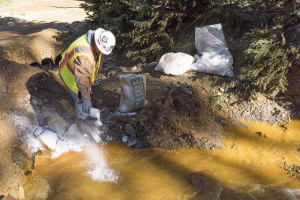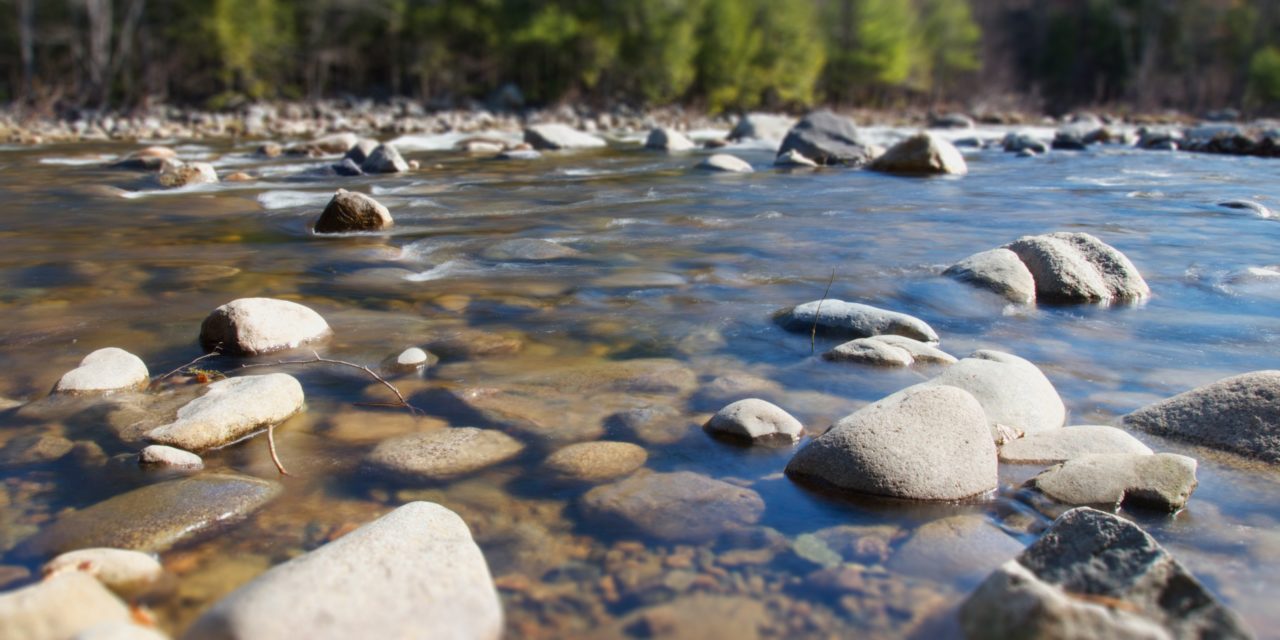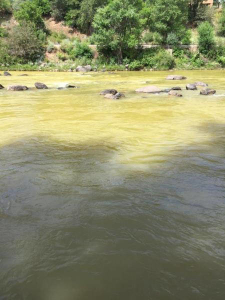One moment the Animas River looked like most other rivers in the San Juan Mountains: a torrent of dark water rushing downstream. Then a U.S. Environmental Protection Agency (EPA) accident sent millions of gallons of acid mine drainage into the river, turning it yellow.
On August 5, EPA workers entered the Gold King Mine near Silverton, Colorado, to assess and treat the contaminated water inside the mine. The workers found loose material had collapsed into the entry. As the workers attempted to clear the block, the loose material suddenly gave way, freeing roughly 3 million gallons of acidic water full of heavy metals into Cement Creek, a tributary of the Animas River.
Lead, which can cause a range of health issues, was one of the metals found in the spill. One water sample revealed lead levels 12,000 times higher than normal. Other metals, such as iron, mercury, and arsenic, were also found in the Animas River after the spill.
The Animas River is the largest tributary of the San Juan River. From its origin in southwestern Colorado, it flows down into New Mexico and Utah. Thus, the contaminated water from the mine flowed downstream from Cement Creek into the Animas River and the San Juan River, and toward homes, businesses, and the Navajo Nation Reservation.
The Navajo Nation has said that it is considering a lawsuit against both the EPA and the owners of the Gold King Mine. Farmland is at risk of drying up because of the temporary lack of uncontaminated water. Even after the EPA issued assurances that the water was safe to use, some Navajos remain afraid to do so.
In Shiprock, New Mexico, 100 Navajo farmers made the tough decision to not use the river water for their crops for at least a year. The fear is that more contamination could be stirred up later and would seep into the soil, affecting future crops. It’s a plan to ensure a safe future that will have immediate consequences for crops planted this year but future benefits. Farming is crucial to many families in the Navajo Nation, and the loss of crops could spell financial disaster for thousands of residents.
To make matters worse, when supposedly clean water was trucked to the Navajos, the water smelled of petroleum. Many of the farmers refused to use the water, and the company that transported the water has not commented on the allegations that the delivered water was also contaminated.
As for the lawsuit, Navajo Nation President Russell Begaye said that more than 100,000 people have been affected by the Gold King Mine spill. Begaye recently ordered EPA officials to stop handing out no-sue waivers to Navajos in the area. He said that some of the residents might not know English or understand the legal ramifications of the document.

Lime is added to a settling pond to adjust the water pH prior to discharge to Cement Creek. Courtesy of Eric Vance/EPA.
The EPA has constructed four settlement ponds at the Gold King Mine site. Water from the mine is being captured and treated at these impoundments to adjust the pH and remove as much metal as possible before being discharged to Cement Creek. Authorities say that sediment samples from the Animas and San Juan Rivers and surface water samples from the Animas River are now testing below recreational screening levels, and both rivers are being maintained at pre-event conditions.
As the cleanup continues, residents along the river are waiting for life to return to normal. On September 2, health officials reported that trout from the river were safe to eat after being tested and found to have metals below the detectable levels. However, officials said that they would continue to test fish because the metals can accumulate in their tissues; this is called bioaccumulation.
The Gold King Mine isn’t the only mine of concern in Colorado—there are thousands of inactive mines in the state. Moreover, mine reclamation isn’t quick, easy, or cheap (see our Kellogg, Idaho case study for an example). A national reclamation project could cost $54 billion. The reclamation process is long and tedious, and because the mines were built a century ago or more, the resources originally used could be deteriorating. If nothing else, the Gold King Mine spill may have raised awareness about a problem that could become very serious.
We’ll have more on the spill in the coming months. Return here for updates or sign up for our newsletter.







Recent Comments